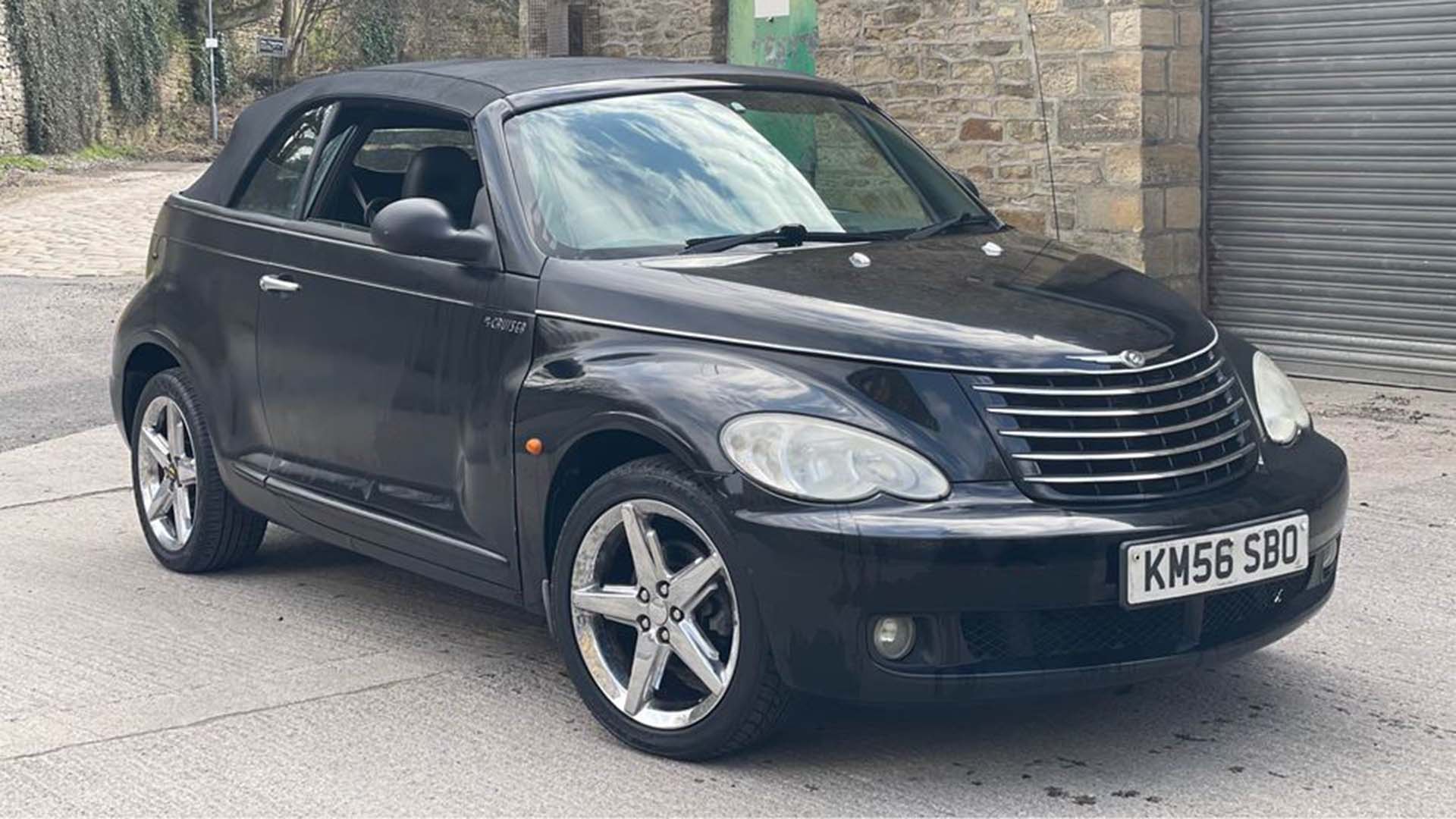If you’re shopping for a new vehicle or simply interested in discovering which cars have proven to be long-lasting, it’s important to explore models known for their reliability, practicality, and durability.
We conducted an analysis of more than 929,000 vehicles from model years 1981 through 2009 to determine which models original owners held onto the longest and here is the list.
Cars That People Still Love After 10 Years
In an industry driven by innovation, where new models hit the market every year boasting cutting-edge tech and sleeker designs, some cars defy the trend. These are the vehicles that don’t just fade into history after a few years—they build a legacy.
Whether it’s for their reliability, timeless design, unmatched driving experience, or sheer emotional connection, certain models earn a rare kind of loyalty.
In this article, we’re spotlighting the cars that continue to win hearts and turn heads a full decade after their debut. These aren’t just machines—they’re icons that prove true automotive love can stand the test of time.
Toyota Highlander Hybrid
Percentage of 15-year-old-plus vehicles still with original owner: 7%
This midsize SUV is highly regarded for its comfortable ride and impressive hybrid fuel economy. It has the capacity to seat up to eight passengers, yet it consumes less fuel than numerous smaller cars.
The 2025 Toyota Highlander Hybrid occupies a central spot in Toyota’s SUV lineup, situated between the smaller RAV4 Hybrid and the larger Grand Highlander. Since its debut in 2000, the Highlander has built a legacy, and this year, Toyota celebrates 25 years of the Highlander with the Limited 25th Edition Hybrid.
The fourth-generation Highlander Hybrid, which has been in production since 2020, now comes standard with all-wheel drive across all trims.
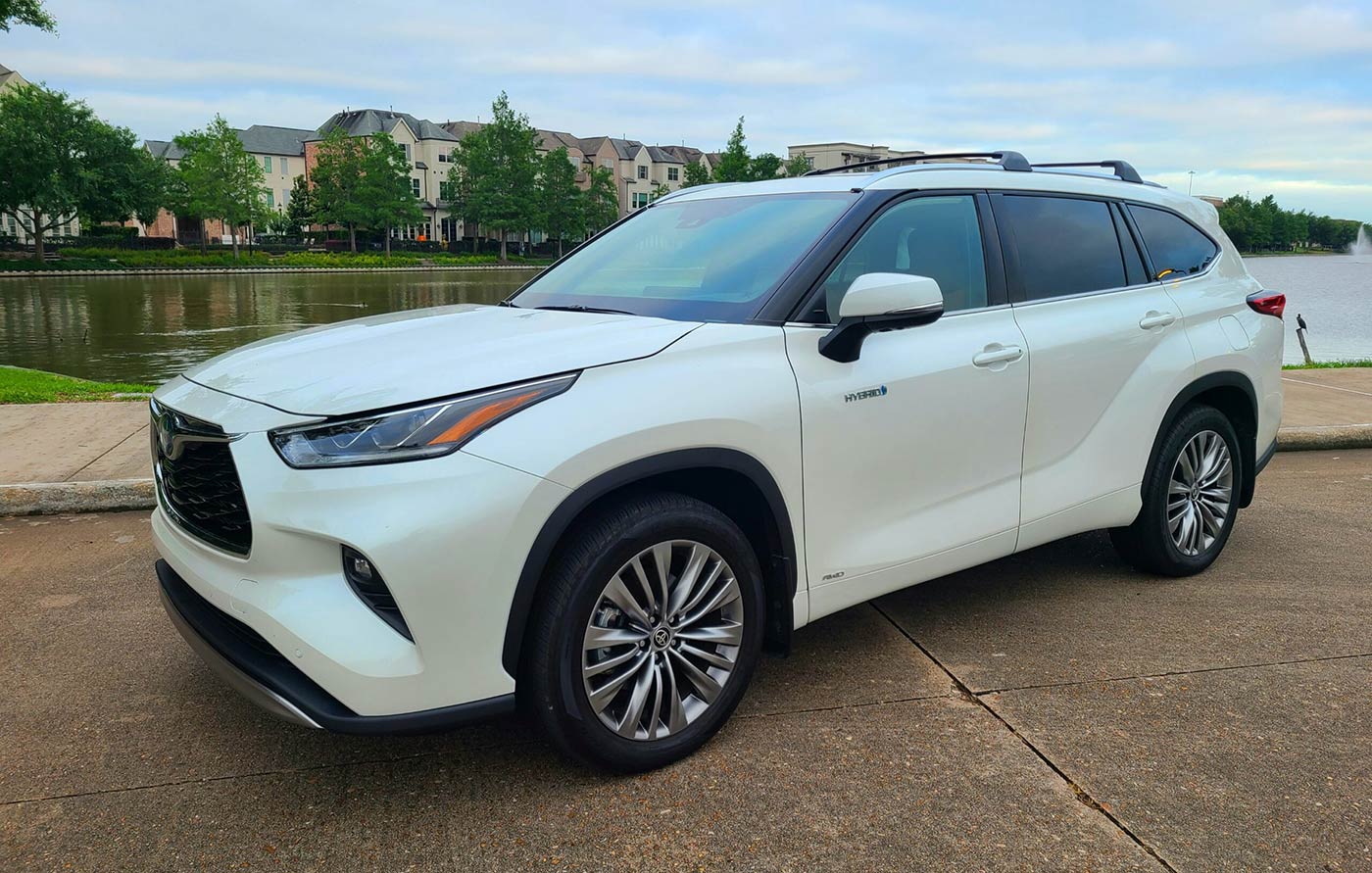
The special 25th Edition, based on the Limited trim, boasts unique interior and exterior features, including special 25th Edition badges, a choice of gray or white paint with chrome accents, and 20-inch wheels.
Inside, it offers luxurious Portobello leather upholstery with the 25th Edition logo embossed on the headrests, alongside the upscale amenities found in the Limited trim, such as an 11-speaker audio system. Only 2,500 units of the 25th Edition will be produced.
This year’s model remains a solid performer, known for its comfortable ride, spacious cabin, and impressive fuel economy, though its third-row seating is best suited for kids, and the engine can sound a bit coarse at full throttle. The Highlander Hybrid XLE trim, for instance, is estimated to cost $112 per month to drive based on a 15,000-mile annual estimate.
In terms of practicality, while the Highlander provides ample passenger space, its cargo capacity behind the third row is less generous compared to some competitors. However, the hybrid powertrain’s efficiency, combined with the all-wheel drive system, makes it a top contender for those seeking a reliable and fuel-efficient three-row SUV.]
Also Read: 13 Engines That Made Japanese Cars Unstoppable and Changed Performance Culture Forever
Toyota Camry Hybrid
Percentage still with original owner: 6.9%
A consistent favorite over the years, the Camry has transitioned into a hybrid model offering front-wheel drive and optional all-wheel drive. Achieving up to 51 mpg, it remains a leading option for drivers focused on fuel efficiency.
Automakers have been ramping up their efforts towards electrification across their lineups, and Toyota is no exception, having long been a leader in this area thanks to the groundbreaking Prius hybrid. For 2025, the Toyota Camry returns exclusively as a hybrid, though its redesign isn’t as dramatic as some might have expected.
Despite this, the midsize sedan receives a series of evolutionary updates that should ensure it remains a top choice for consumers seeking a high-efficiency vehicle with plenty of space and a traditional design.
The changes for the 2025 model include a redesigned front fascia, a restyled interior, and the hybrid drivetrain now being standard across the board. There’s also an available e-AWD system, a re-engineered suspension setup, and a new braking system.
On the technology front, the Camry offers a standard 7.0-inch digital gauge cluster and a standard 8.0-inch infotainment touchscreen, with available upgrades like a 12.3-inch touchscreen and a 10.0-inch head-up display.
Other standard features include dual-climate control with rear air vents, blind-spot monitoring with rear cross-traffic alert, and Toyota Safety Sense 3.0, which comes standard with pre-collision avoidance, adaptive cruise control, lane-keeping assist, and more. In terms of exterior design, new Ocean Gem and Heavy Metal paint colors join the palette, with the XSE trim offering available two-tone exterior color schemes.

Although the 2025 Camry might resemble its predecessor at first glance, especially in terms of its side and rear profiles, there are notable upgrades inside. The cabin maintains a simple, straightforward design, but driving the new Camry reveals a surprising level of fun and engagement.
The hybrid powertrain delivers strong off-the-line acceleration with the help of its electric motor, while the brakes feel consistent and predictable. Handling is more agile than expected, with accurate steering and a composed ride, making it enjoyable for both commuters and driving enthusiasts.
In terms of performance, the 2025 Toyota Camry Hybrid benefits from a significant boost in power, thanks to an updated hybrid system. The new 2.5-liter four-cylinder engine, paired with dual electric motors, produces 225 horsepower, an increase of 17 horsepower over the previous model.
All-wheel-drive variants, which include a rear electric motor, boost the total system horsepower to 232. The hybrid Camry is quick too, with a 0-60 mph time of 6.9 seconds.
Fuel efficiency remains strong, with the Camry LE FWD achieving an impressive 53 mpg in the city and 50 mpg on the highway. However, fuel economy slightly decreases with the XSE trim (48/47 mpg) and when all-wheel drive is selected, reducing efficiency by one to four mpg.
Toyota has yet to introduce a plug-in hybrid version of the Camry, but given the company’s history with plug-in hybrids, such as the Prius Prime and RAV4 Prime, a future Camry Plug-in Hybrid (PHEV) is a distinct possibility. With the RAV4 Prime’s 302-hp AWD system and battery setup, it’s feasible that Toyota could incorporate similar components into the Camry for a high-performance PHEV.
In terms of safety, the 2025 Camry Hybrid comes with Toyota Safety Sense 3.0, which includes a suite of advanced driver assistance features such as pre-collision avoidance, lane-departure avoidance, adaptive cruise control, and lane following assist. Additionally, blind-spot monitoring, rear cross-traffic alert, and a variety of other safety tech options are available.
On the technology front, the 2025 Camry Hybrid follows the trend of its hybrid sibling, the Prius, by offering a variety of modern tech features. A standard 7.0-inch digital instrument cluster and 8.0-inch infotainment touchscreen with wireless Apple CarPlay and Android Auto come on every model.
Wireless charging and multiple USB ports are included as well. The XLE and XSE trims feature upgraded 12.3-inch digital screens for both the instrument cluster and the infotainment system. Additional tech options include a 10.0-inch head-up display and a nine-speaker JBL audio system.
Also Read: 10 Cars With Best Dash Designs That Bring Innovation
Toyota Highlander
Percentage still with original owner: 6.6%
This model represents the gas-only variant of the Highlander Hybrid. It is well known for its comfortable interior, quiet ride, and fuel efficiency that exceeds expectations for a midsize SUV.
The 2025 Toyota Highlander may not be known for thrilling performance, but it remains a practical and efficient family vehicle. Introduced in the U.S. in 2001 as a five-seater and eventually adding a third-row option, the Highlander has established itself as one of the longest-running nameplates in its class.
However, it now faces stiffer competition from newer models like the Kia Telluride, Hyundai Palisade, and Subaru Ascent, which have surpassed the Highlander in certain areas. For those prioritizing better fuel economy, the Highlander Hybrid is a standout option, and for families in need of a more spacious third row, the Grand Highlander offers an excellent alternative.

For 2025, notable updates to the Highlander include the addition of all-wheel drive (AWD) as standard across all hybrid models, as well as the introduction of the 25th Anniversary Edition. This limited-edition model celebrates the Highlander’s history with unique exterior and interior details.
Other updates include new exterior paint colors, including the Heavy Metal option for the XLE, Limited, and Platinum trims, and the availability of the sporty XSE trim in Cement exterior with a default Sport drive mode.
Toyota has also discontinued the LE and LE Nightshade hybrid trims, along with the front-wheel-drive (FWD) versions of the XSE and Platinum. Additionally, the Moondust exterior color and Harvest Beige interior have been retired.
Toyota’s improvements to the Highlander in recent years have helped maintain its status as a reliable and efficient family hauler. The introduction of a new 2.4-liter four-cylinder engine, which provides 265 horsepower and 310 lb-ft of torque, offers better fuel economy than the previous V-6 engine.
While this engine provides sufficient power for everyday commuting, it struggles with heavy loads, and the ride can become bouncy on uneven terrain.
The steering is precise but lacks dynamic feel, and while the third-row seating is tight—common for vehicles in this segment—the interior is comfortable and well-equipped. The Highlander also offers smart storage solutions and plenty of charge ports, making it practical for families.
Long known for its value and strong safety ratings, the Highlander remains a solid option for families. For those looking for superior fuel efficiency and an extended driving range, the Highlander Hybrid is the way to go.
However, models like the Hyundai Palisade and Kia Telluride, with their refined interiors and rugged appeal, are also worthy of consideration. In terms of performance, the 2025 Highlander Hybrid offers 243 horsepower and achieves impressive fuel economy figures, with 35 mpg in both city and highway driving.
The hybrid is only slightly slower than the gas-powered model, making it a great option for those prioritizing fuel efficiency. With the discontinuation of front-wheel-drive hybrid models, all Highlander Hybrids for 2025 come with AWD.
Toyota Tacoma
Percentage still with original owner: 6.4%
This well-loved midsize pickup stands out for its day-to-day practicality and durable off-road performance a blend that encourages owners to hold on to it for many years.
The Toyota Tacoma is a compact pickup truck that has built a reputation for its rugged reliability, off-road capabilities, and long-lasting durability.
First introduced in 1995, the Tacoma has become a staple in the midsize pickup truck segment, especially valued by those who need a vehicle that can handle tough tasks and off-road adventures. For 2025, the Tacoma offers two engine choices, with the base model featuring a 2.7-liter 4-cylinder engine that produces 159 horsepower and 180 lb-ft of torque.
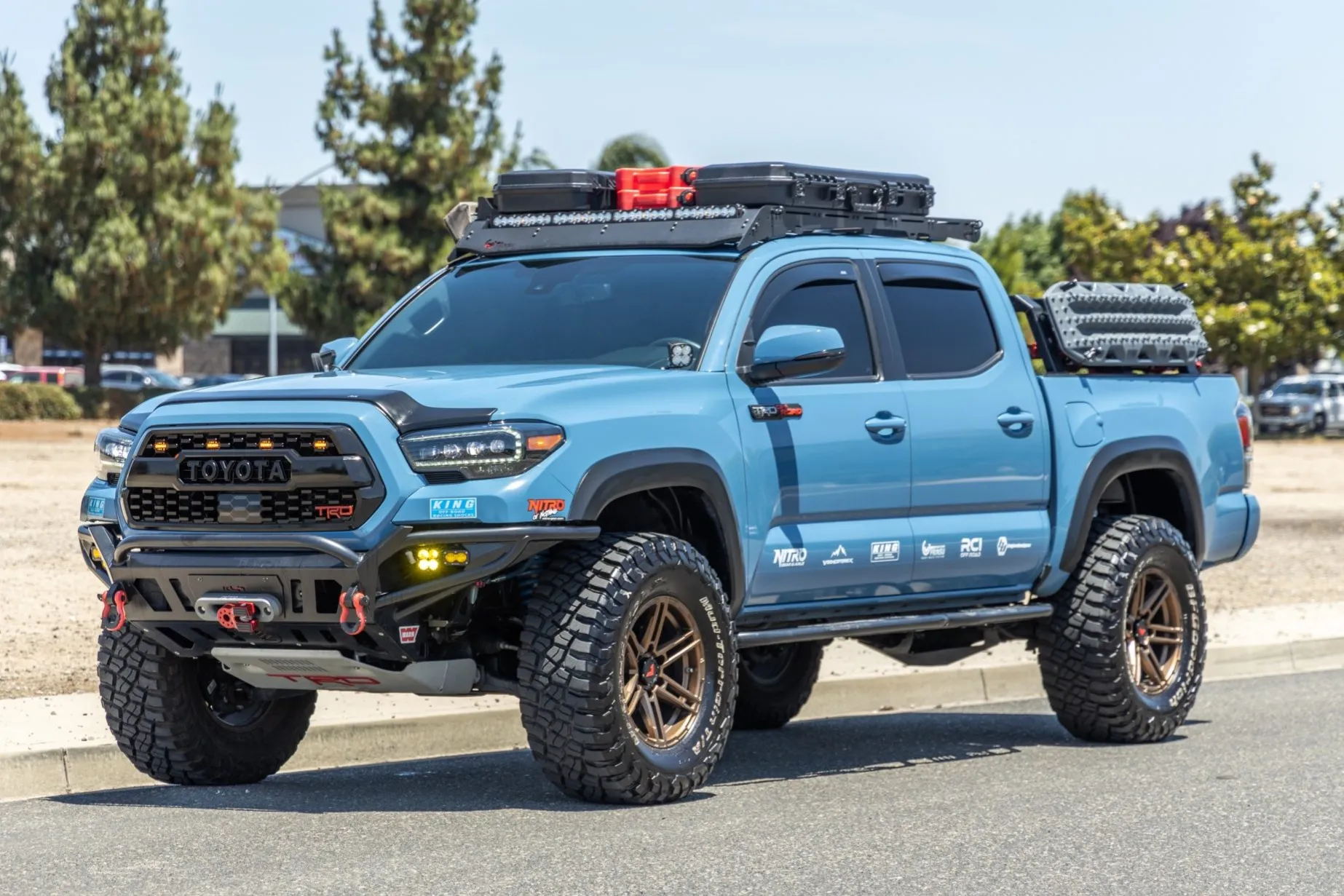
For those seeking more power, the 3.5-liter V6 engine option delivers 278 horsepower and 265 lb-ft of torque, making it ideal for towing and off-road use. Both engines are paired with either a six-speed manual or an automatic transmission, depending on the configuration.
The Tacoma also boasts impressive towing and payload capacities. The V6-powered version can tow up to 6,800 pounds, while the truck has a maximum payload capacity of 1,685 pounds.
These figures make the Tacoma a strong contender in the midsize truck market, especially for those needing a vehicle that can haul heavy loads. Inside, the Tacoma combines practicality with modern technology. The base model comes with fabric upholstery, but higher trims offer leather and upgraded materials.
The truck features an 8.0-inch touchscreen with Apple CarPlay and Android Auto compatibility, and higher trims provide a larger 10.1-inch touchscreen and a premium JBL audio system. Additionally, Toyota includes its Toyota Safety Sense suite of driver-assistance features as standard, which includes adaptive cruise control, lane departure warning, and automatic emergency braking.
The Tacoma’s off-road capabilities are one of its standout features, particularly in the TRD Off-Road and TRD Pro trims. These versions are equipped with features like a locking rear differential, upgraded suspension, and skid plates, with the TRD Pro trim adding Fox shocks, all-terrain tires, and a multi-terrain monitoring system.
These enhancements make the Tacoma an excellent choice for off-road enthusiasts who need a vehicle that can handle rough terrain.
On the road, the Tacoma provides a comfortable ride for a pickup truck, although it can feel stiff, especially with the off-road-oriented trims. The handling is precise, with good road feel, making it relatively easy to maneuver despite its truck size.
In terms of pricing, the Toyota Tacoma starts around $28,000 for the base SR trim, with prices climbing significantly for the higher-end TRD Pro trims, which can exceed $40,000 when fully loaded.
The Tacoma continues to excel in its core strengths of reliability, performance, and off-road capability, making it an appealing option for buyers looking for a tough, dependable pickup truck that can handle a variety of tasks. Whether you need a workhorse for towing or a capable off-roader, the 2025 Toyota Tacoma remains a top choice in the midsize truck segment.
Also Read: 13 Engines That Made Japanese Cars Unstoppable and Changed Performance Culture Forever
Honda CR-V
Percentage still with original owner: 6.3%
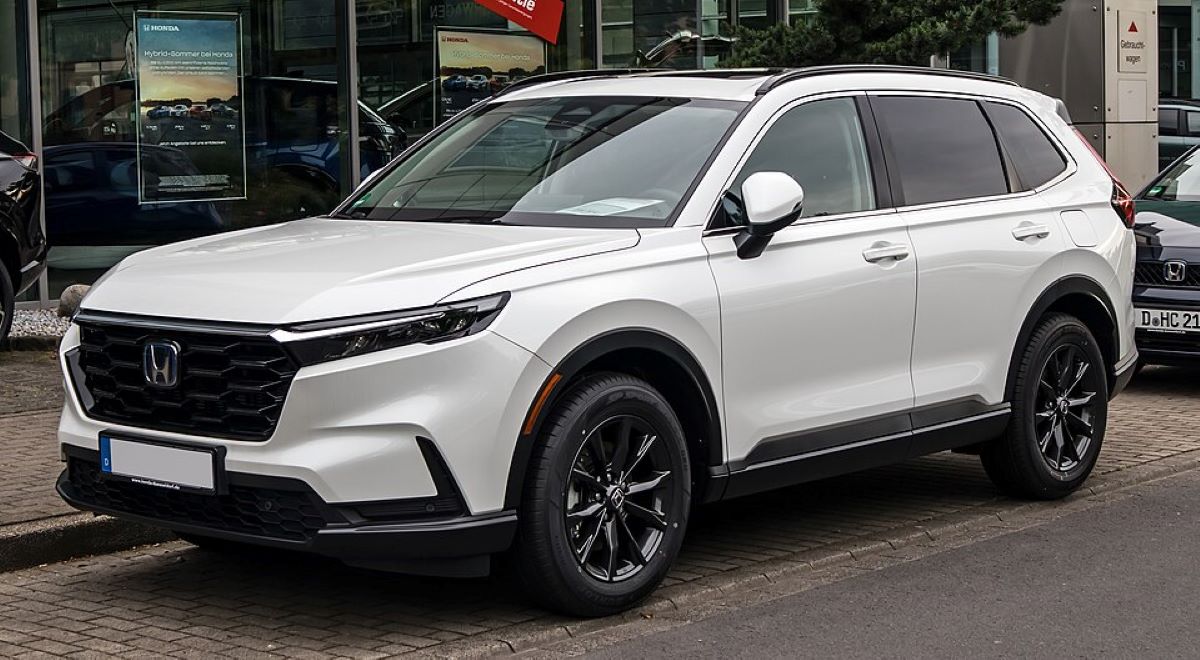
This five-seat SUV is praised for comfort, cargo space, and a solid 30 mpg. Owners tend to value its dependability and low maintenance costs.
The 2025 Honda CR-V continues to stand out as a top contender in the compact SUV segment, falling between the subcompact HR-V and the larger midsize Passport and Pilot in Honda’s lineup. Known for its practicality, comfort, and reliability, the CR-V maintains its reputation as one of the best small SUVs, thanks to its redesign in 2023.
For 2025, there are no significant changes, but the core attributes that have made the CR-V popular remain intact. The spacious interior offers plenty of room, making it ideal for families or anyone who needs a comfortable ride with ample cargo space.
While the ride is smooth and quiet, providing long-distance comfort, the cabin is still practical with a user-friendly tech interface. However, there is limited storage space for small items, and the hybrid powertrain, although fuel-efficient, can be noisy and sluggish on hilly terrain.
Honda’s attention to customer needs is reflected in the CR-V’s focus on comfort and convenience rather than performance or off-road prowess.
The suspension system effectively smooths over bumps, and the seats are designed for comfort, making long trips more enjoyable. The cabin remains quiet, which is ideal for reducing fatigue during commutes or allowing children to nap.
The 39.3-cubic-foot cargo capacity behind the rear seats is another highlight, offering impressive space for luggage, groceries, or family gear. While other manufacturers may emphasize performance or off-road capabilities, the CR-V remains steadfast in providing a well-rounded package focused on comfort and practicality.
Cars Almost Everyone Loves To Hate
More often than not, individuals and companies face much harsher scrutiny for their failures than they receive praise for their successes.
A prime example of this can be seen in the automotive industry. Time and again, manufacturers appear to ignore what consumers truly want and find appealing, resulting in some of the most unattractive vehicles in the world.
These “ugly ducklings” are, quite rightly, regarded by the majority as complete failures in both appearance and reliability.
Their critics aren’t mistaken, of course, but the real question is why and how these cars became so widely disliked.
To explore that, and to identify which cars you should avoid, here are fifteen of the most hated vehicles in the automotive community.
Smart ForTwo
Just about every adult car enthusiast today recalls the moment Smart entered the American automotive market.The arrival of the model sparked two main reactions: amusement and confusion.
While the car community found the concept of such a tiny and oddly designed vehicle entertaining, it was largely baffled by the question of who would seriously consider making such a questionable financial investment.
The 2017 Smart Fortwo Pure Coupe is a compact hatchback that offers a unique and efficient driving experience. It starts at a price of $15,400 and is classified as a two-seater with rear-wheel drive. The Fortwo Pure Coupe is powered by a 1.0-liter, 3-cylinder engine that runs on premium unleaded fuel.
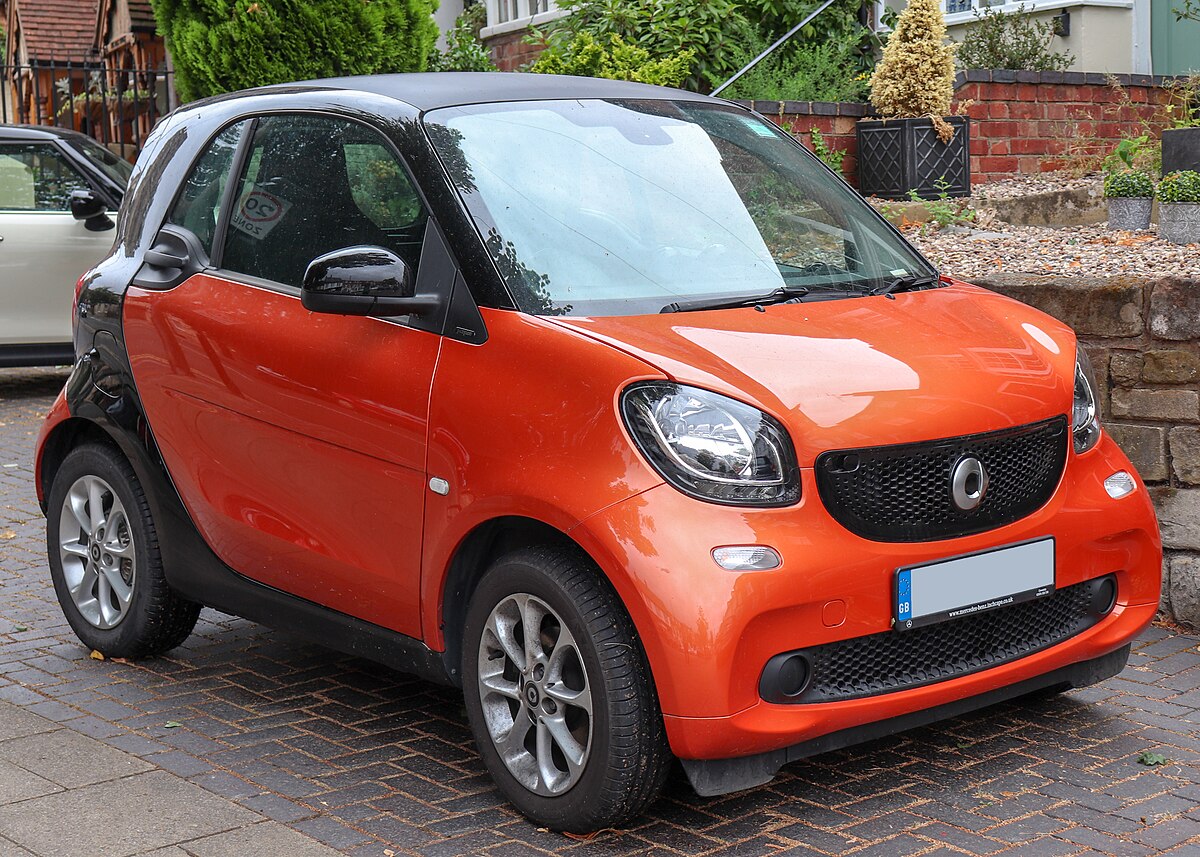
This engine delivers a maximum horsepower of 89 at 6,200 RPM and maximum torque of 100 lb-ft at 2,500 RPM. It is equipped with a multi-point fuel injection system (MPI) and is paired with a 5-speed manual transmission with overdrive (OD). The exact capacity for the cooling system and engine order code are not specified.
Yugo
The Yugo stands as a pure example of communism in action. At the peak of the Soviet Union’s power, the U.S.S.R. launched a state-funded automaker intended to produce extremely affordable vehicles for the average citizen.
However, that vision never fully materialized.
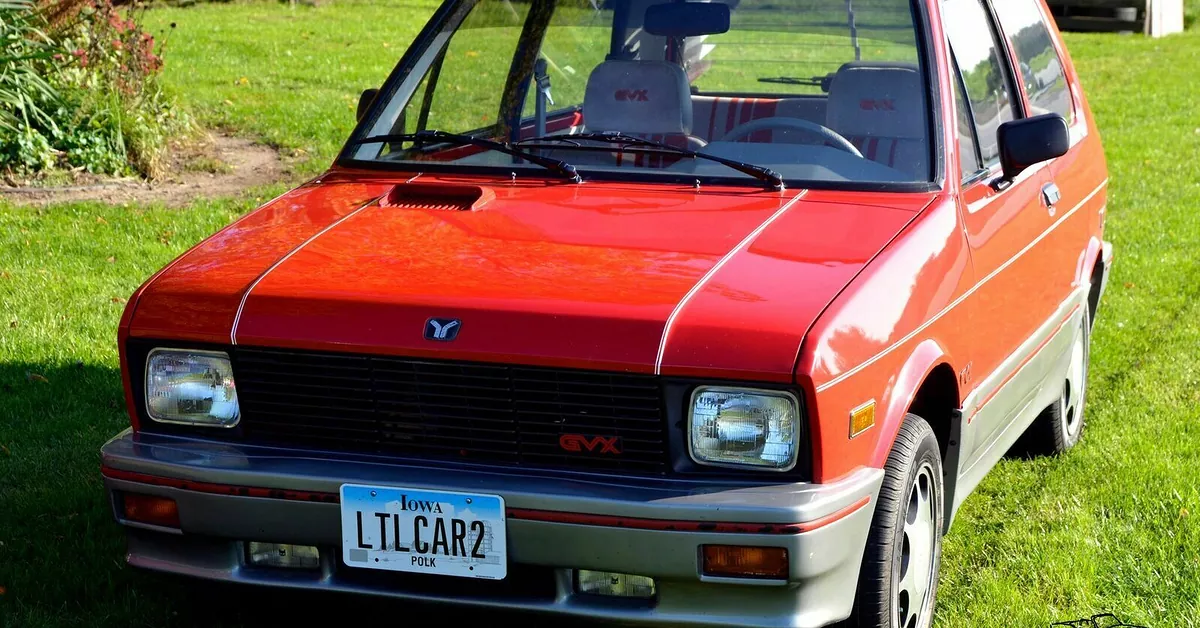
In reality, only a small fraction of Soviet citizens were able to acquire a car at all often after enduring years of waiting for approval and there was just one model to choose from: the Yugo.
Sure, it was inexpensive, but most people had no idea just how low-quality it truly was. Picture a cardboard-like body, minimal horsepower, an unattractive design, and a total lack of any real features. This, dear readers, is what communism delivers.
If you’re not familiar with the name “Yugo,” a quick glance at any automotive history book will likely reveal an entire chapter devoted to the brand’s infamous collapse.
This small Yugoslavian automaker gained some popularity during the 1980s and 1990s, making its U.S. debut in 1985, thanks to Malcolm Bricklin, the same individual who later helped Subaru gain recognition in America.
However, American consumers didn’t take kindly to Eastern European hatchbacks in the same way they embraced Japanese sedans. Issues such as poor build quality, unreliability, and inadequate safety measures led many buyers to dismiss the brand. By 1992, Yugo had disappeared from the U.S. market, cementing its place in history as one of the worst car brands of all time.
Despite these significant flaws, Yugo managed to survive in Europe for almost 30 years, continuing to produce the same inexpensive, basic hatchback, albeit with minor updates over the years. Eventually, the company ceased operations in 2008. Now, more than 17 years later, Yugo is making a comeback.
Chrysler PT Cruiser
Aside from the Toyota Prius, one of the most notorious vehicles in the United States even among those who aren’t car enthusiasts is the Chrysler PT Cruiser.
Putting aside the widespread criticism of its design, the PT Cruiser is, quite frankly, just a poor vehicle.
Mechanical failures, transmission troubles, and a range of smaller annoyances are only a portion of the headaches that PT Cruiser owners are likely to face.
The Chrysler PT Cruiser is a compact car that was produced by Chrysler from 2000 to 2010. Known for its distinctive retro design, which harkened back to the 1930s, the PT Cruiser quickly became a unique offering in the automotive market.
Its bold, curvy, and somewhat quirky styling made it stand out from other vehicles on the road. The PT Cruiser was marketed as a versatile and practical car, blending the compact size of a small car with the spaciousness and functionality of a larger vehicle.

When it debuted, the PT Cruiser was well-received for its combination of style, functionality, and relatively affordable price point. It was offered in a variety of body styles, including a four-door sedan and a convertible. Its roomy interior, with seating for five and a decent cargo capacity, made it a popular choice among families and young professionals alike.
The PT Cruiser was powered by a range of engines over its production run. The base models featured a 2.4-liter inline-4 engine, delivering around 150 horsepower, while turbocharged versions offered more power, with outputs approaching 220 horsepower. It was available with either a manual or automatic transmission, and front-wheel drive was the standard drivetrain.
Despite its initial popularity, the PT Cruiser faced criticism over the years. Some complained about its less-than-sporty handling, relatively poor fuel economy, and the fact that its design began to feel outdated as automotive trends evolved. The interior, while spacious, was often regarded as somewhat cheaply made, with a focus on form over function.
Production of the PT Cruiser was discontinued in 2010 after a decade-long run, primarily due to declining sales and a shift in consumer preferences toward other types of vehicles, such as crossover SUVs. Nevertheless, the Chrysler PT Cruiser remains a nostalgic icon for many car enthusiasts, thanks to its unique design and the part it played in early 2000s automotive culture.
Fiat Multipla
We couldn’t possibly leave out the iconic Fiat Multipla from this list of the “most hated automobiles.”
Episode after episode, the show’s hosts relentlessly mocked the Multipla for one glaring reason: its appearance. Since then, it has evolved into something of a meme within the car enthusiast community.
It’s no surprise that so many older individuals ended up purchasing the original Multipla. After all, you might need a vision impairment to believe that such a vehicle belongs anywhere other than the scrap heap.
You may find the price of a used Fiat Multipla to be pleasantly surprising. These cars depreciate quickly right after they are bought new, but their value tends to stabilize within a few years.
This means that, with some careful planning, you could purchase a one- or two-year-old Fiat Multipla at a bargain price, enjoy it for a few years, and then sell it without taking too much of a financial hit.
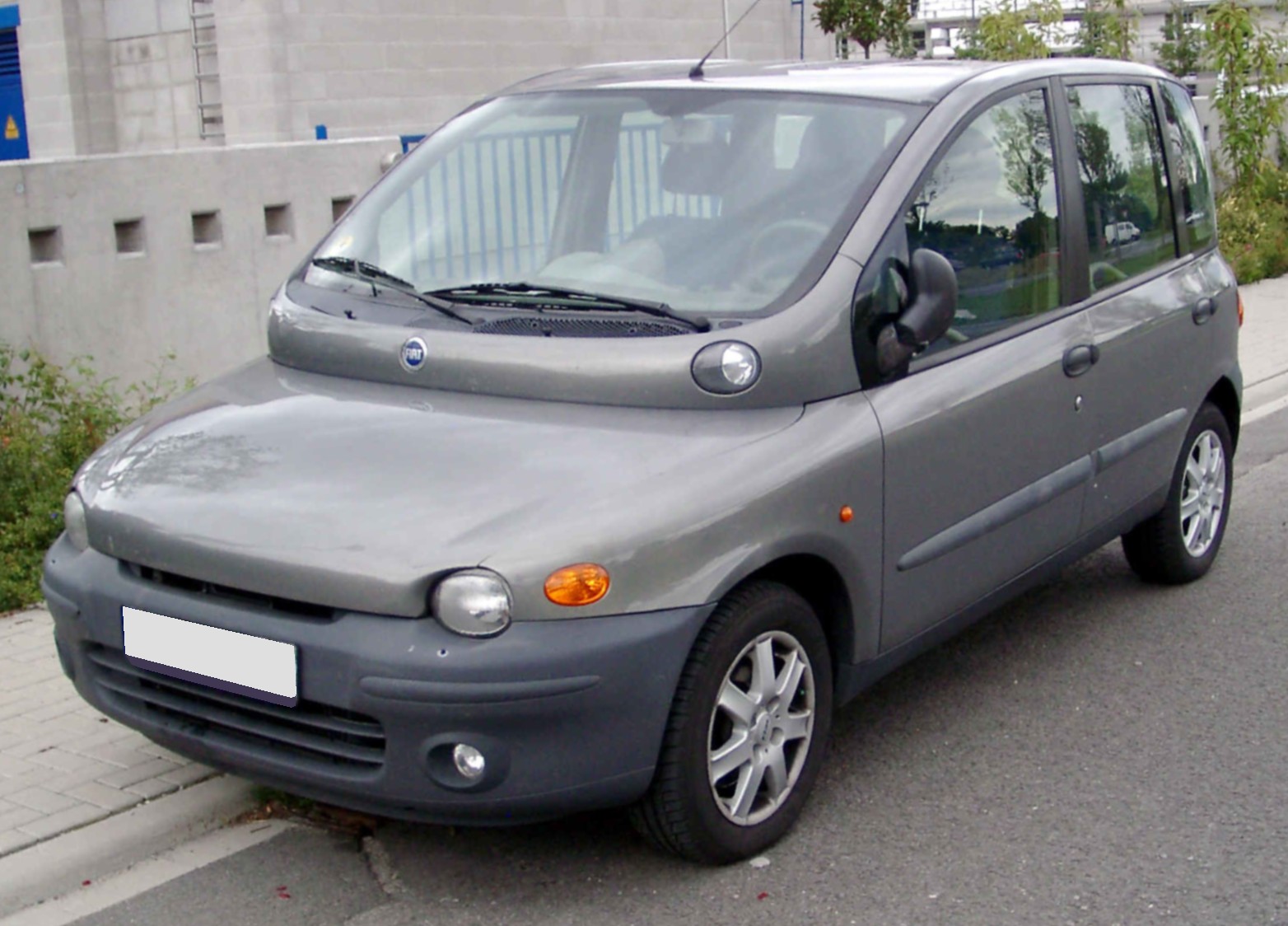
When it comes to insurance and fuel costs, these are also relatively reasonable. The petrol versions fall into insurance groups 7 to 9, depending on the trim, while the diesel models are in groups 8 to 10. The diesel versions are quite fuel-efficient, achieving mid-to-low 40s mpg, while the petrol versions deliver about 10 mpg less.
Servicing costs won’t break the bank either. If you decide to go outside of the Fiat dealer network, you could save around 35% on labor costs, according to Warranty Direct data.
In terms of which used Fiat Multipla MPV to buy, there isn’t much variety – only one petrol, one diesel, and a few trim levels to choose from. Fortunately, there is no “bad” option among them.
The 103bhp 1.6-litre petrol engine is peppy and responsive, which is useful when the car is fully loaded. It is also the more affordable choice.
On the other hand, the turbodiesel engine is more relaxing to drive and is, ultimately, the preferred option for us. The refined 1.9 JTD (with 102-115bhp, depending on its age) offers strong mid-range performance and gives an extra 10 mpg compared to the petrol version, which is a major advantage.
The entry-level model (badged SX on earlier models, Dynamic on later ones) includes all the essential features needed for family driving, such as air conditioning, making it unnecessary to spend more.
However, for those looking for extra features, the higher-end ELX (early models) and Eleganza (later models) trims come equipped with alloy wheels, climate control, and electric rear windows.
Toyota Prius
Among all the vehicles featured on this list, none have faced as much criticism, scorn, and open ridicule as the Toyota Prius. If you’re looking for the ultimate outcast in car culture, this is it.
From its design to the mild engine note and even its mechanical reliability, the Prius has been branded with a scarlet letter of sorts destined to be disliked by dedicated car enthusiasts.
The 2025 Toyota Prius continues its legacy of being a standout for efficiency, without the emphasis on aesthetics or coolness that typically characterizes many other cars.
For years, the Prius has been known for one thing: efficiency. The fifth-generation Prius, which debuted in 2023, broke from tradition, offering not only remarkable fuel economy but also an unexpectedly attractive design and respectable power.

This version achieved an impressive 57 mpg combined in its most fuel-efficient trim, setting it apart as the most attractive, quick, and efficient compact hybrid we’ve seen. It’s a welcome change in a world where efficient vehicles like the Prius are now not only practical but desirable.
The 2025 Prius doesn’t bring any significant updates, as the redesign introduced in 2023 already brought a new platform, powertrain, and a complete overhaul of the Prius’ character.
It’s unlikely Toyota will make major changes, as the Prius already comes equipped with modern technology and advanced driver-assistance features. However, Toyota might aim to add a performance boost for the 2025 model, especially after teasing the idea with the Centennial GR Edition Prius concept at the 24 Hours of Le Mans.
The possibility of a Prius that’s both visually appealing and engaging to drive was once a distant dream, but with the redesign in 2023, that dream was realized. So, there’s a chance we might see an even more exciting version in the 2025 model.
As for costs, the Prius continues to be an economical choice. The 2025 Prius LE 4-door hatchback with the 2.0L 4-cylinder gas/electric hybrid powertrain is estimated to cost just $69 per month for fuel when driving 15,000 miles annually, with a mix of 55% city and 45% highway driving.
In comparison, the average midsize car will cost around $160 per month for fuel. The Prius’ strong fuel economy ensures that it remains one of the most cost-effective vehicles to drive.
While the Prius has a few minor drawbacks, such as tight backseat headroom, a gauge cluster that’s sometimes hard to view due to the steering wheel, and a noisy engine when it switches to gas, it remains a solid choice for those prioritizing fuel savings, ease of use, and a smooth driving experience.
The car’s infotainment system is also praised for being user-friendly, and the advanced driver-assistance features operate smoothly and effectively, further adding to the car’s appeal.

